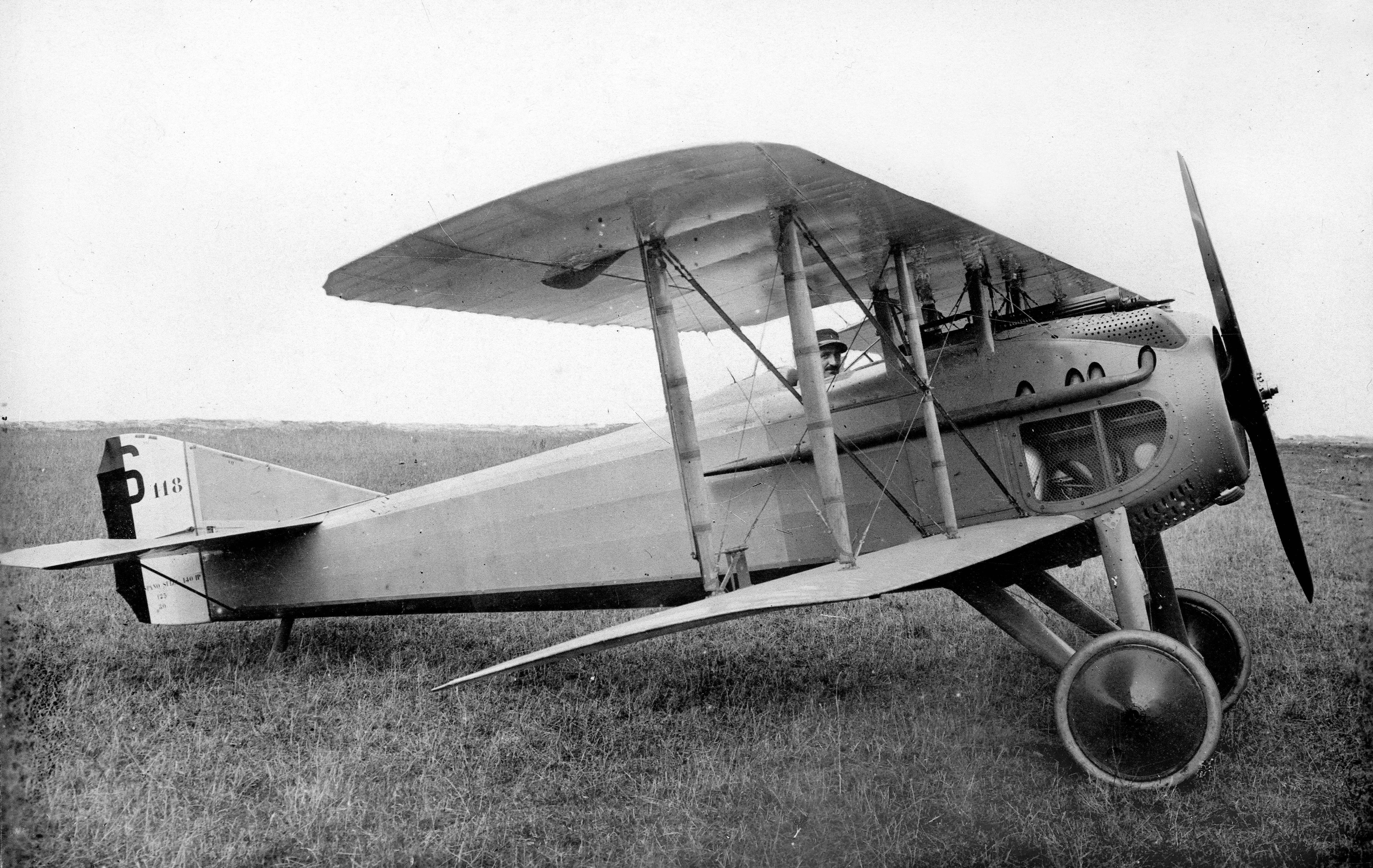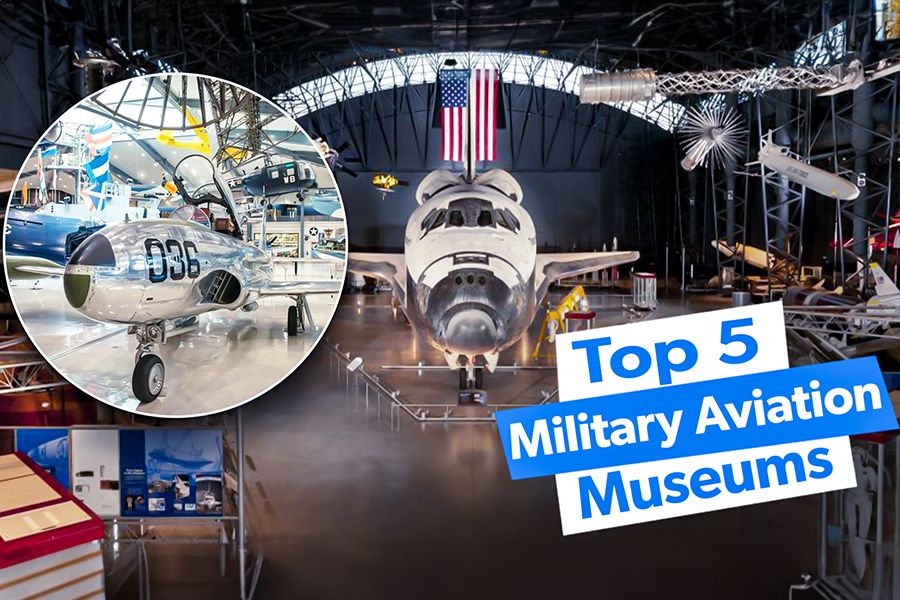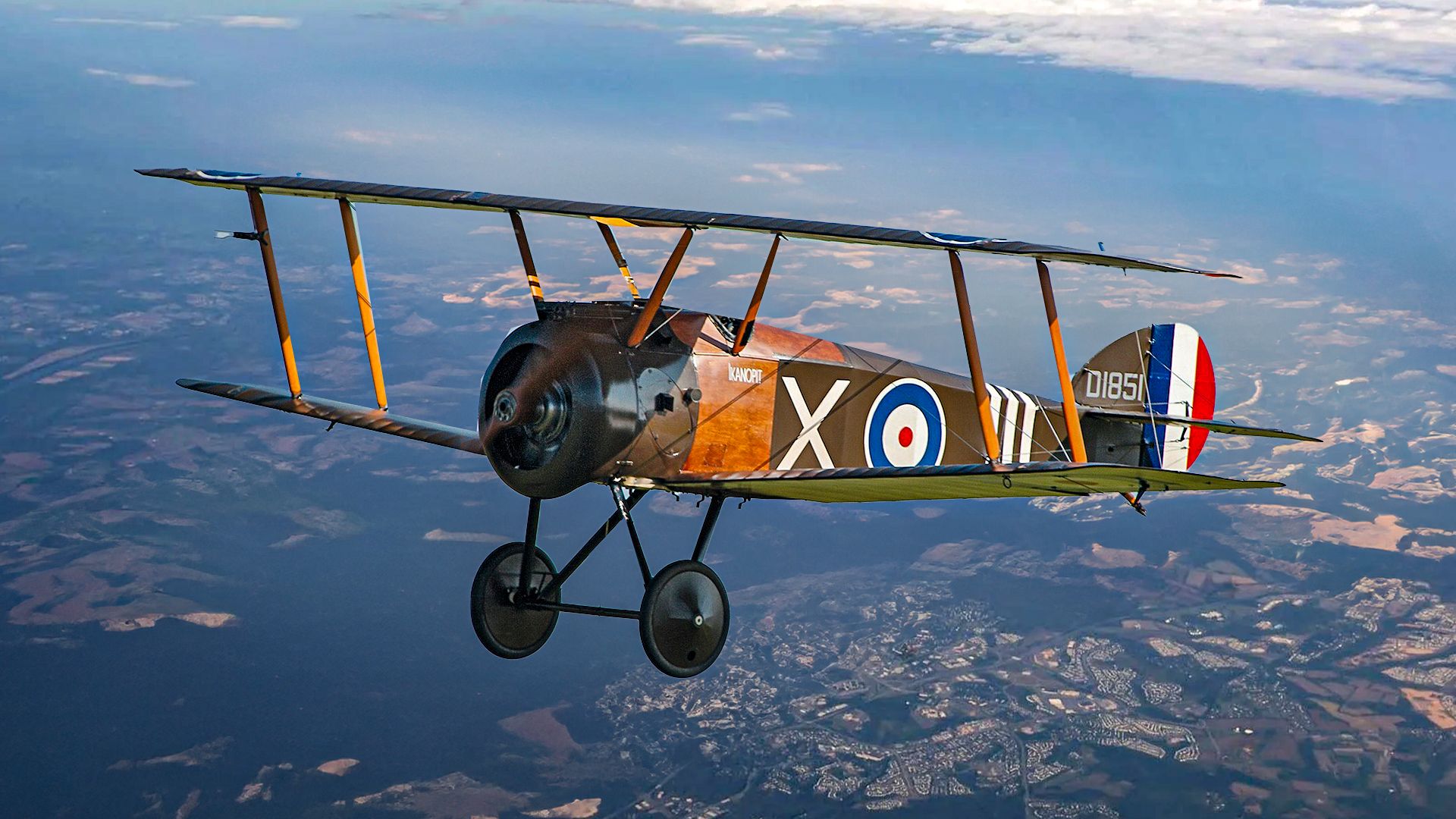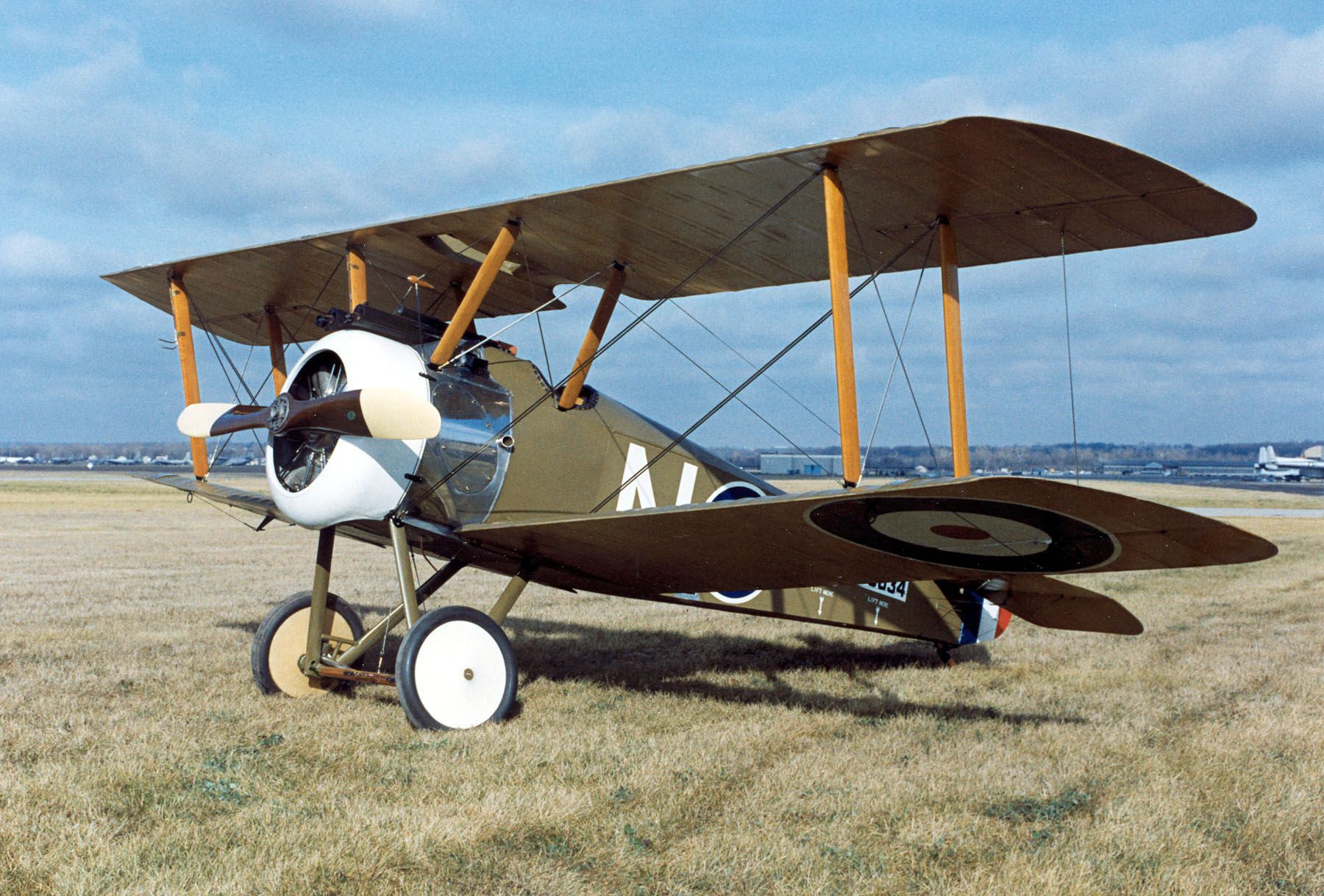Summary
- The Sopwith Camel was a legendary WWI fighter with unmatched air-to-air kill stats.
- Named after a peaceful animal, it was known for being unforgiving towards pilot mistakes.
- Only 8 of the 5,490 built Sopwith Camels remain, with one being airworthy and located in New Zealand.
Fighter aircraft are ofttimes named for birds of prey; the F-15 Eagle, F-22 Raptor, and F-16 Fighting Falcon are the examples that come most readily to mind.
Yet Great Britain's most famous fighter plane of the First World War was named for a herbivorous mammal, and moreover a species nicknamed "ships of the desert," as opposed to "airplanes of the desert." I speak, of course, of the Sopwith Camel. A fighter plane, that -- her peaceful zoological namesake notwithstanding -- became a legend, mainly due to her real-life exploits in the deadly skies of WWI aerial combat...but also further immortalized by a beloved fictitious American cartoon dog. Let's take a further look at this legendary aerial "dog & camel show" (as opposed to dog & pony show)...
Early History and Specifications
The Sopwith Camel made her maiden flight in December 1916 and entered into official operational service with the Royal Flying Corps (RFC) in June 1917. Designed by Herbert Smith, she was built by the now defunct Sopwith Aviation Company (which was eventually bought out by Hawker Aircraft Ltd.), headquartered in Brooklands, Surrey, England. A total of 5,490 airframes were built before the Camel was officially retired in January 1920.
On April 1, 1918, the RFC and the Royal Naval Air Service (RNAS) to form the Royal Air Force (RAF).
The Sopwith Camel boasted a max airspeed of 113 mph (182 km/h; 98 kn), a range of 300 mi (480 km; 260 nmi), and a service ceiling of 19,000 ft (5,800 m). Other vital stats:
|
Fuselage length |
18 ft 9 in (5.72 m) |
|
Wingspan |
28 ft 0 in (8.53 m |
|
Height |
8 ft 6 in (2.59 m) |
Armament-wise, this carnivorous Camel (so to speak) packed two synchronized forward-firing .303 caliber (7.7mm) Vickers machine guns.
Combat Performance
The Sopwith Camel's reputation turned out to be well-earned, as her pilots scored more air-to-air kills than any other Allied fighter type of the First World War, with an officially credited aerial victory tally of 1,294 enemy aircraft.
However, this was a mixed blessing, as the carnivorous Camel had a reputation for biting the (proverbial) hand that fed her; she was very unforgiving toward pilot error. As former Royal Navy (RN) officer James Fennell MBE wrote for Quora:
"Given that the airframe was not much larger than the dimunitive [sic] and delighfully [sic] easy to fly Nieuport, the immense torque of the big motor meant that the Camel was anything but. British pilots joked that if you flew a Camel you would end up with either a wooden cross, the Red Cross or a Victoria Cross...Yet it was that very instability that made the Camel a supreme dogfighter in the hands of an expert, and with the SE5 and SPAD S VII, allowed the Allies to wrest air superiority from the Alabatros [sic] D III and D V (both of which the Camel outperformed). In late 1917 the Camel was faster, more manourvrable [sic] and as well armed as anything the Germans could put up against it."
A classic example of taking the good with the bad. But, on balance, the good of the Camel obviously outweighed the bad.

The High-Performance Of France's SPAD S.VII Aircraft
The plane was an integral force during World War I.S&C + S&C: The Sopwith Camel-Snoopy Connection
That Bloody Red Baron was in a fix
He'd tried everything, but he'd run out of tricks
Snoopy fired once, and he fired twice
And that Bloody Red Baron went spinning out of sight
As anybody who's familiar with Snoopy (one of American pop culture's most beloved cartoon dogs --an anthropomorphic beagle to be precise -- since he debuted in Charles M. Schulz's Peanuts comic strip in 1950) can attest, he's a pooch of many accolades, most prestigious among them being a bona fide war hero who shot down Imperial Germany's most famous air ace of WWI, Rittmeister (Captain; equivalent of Hauptmann in most Imperial Germany Army branches) Baron Manfred Albrecht Freiherr von Richthofen, better known as the Red Baron.
Snoopy pulled off this legendary feat in a Sopwith Camel, highly modified and customized to resemble the ordinary doghouse from his home civilian life:
As to the "story behind the story" of why Mr. Schulz chose a Sopwith Camel with which to arm Snoopy, this nugget from the r/AskHistorians section of Reddit gives this neat story:
"The origin of Snoopy as flying ace, in 1965: Shultz's son Monte had been making WW1 airplane models. Schulz was at his drawing board when his son brought his most recent model by, and a discussion about WW1 aviation ensued. Schultz drew a helmet on Snoopy, then asked Monte to bring a book reference. They looked up what the model actually was: a Sopwith Camel."
The official info page of the National WWI Museum and Memorial in Kansas City, Missouri, adds this nugget of information:
"Schulz served as a sergeant in the United States Army and had always wanted to draw adventure comic strips but had been told to stick with what he did best – funny kids. However, after 15 years as a cartoonist, on Sunday, October 10, 1965, he finally had the opportunity to create his hero: Snoopy, the World War I Flying Ace."
Silliness and tongue-in-cheek humor aside, we all know that Snoopy didn't really shoot down the Red Baron. As to the question of who really *did* pull of this feat, well, after more than a hundred years, there's still some controversy over that. To this day, the RAF officially grants recognition to a real-life Camel driver, Captain/Flight Lieutenant Arthur Roy Brown, a Canadian pilot serving with His Majesty's Forces and who finished the war officially credited with ten aerial victories (thus attaining double ace status). However, modern-day experts and revisionist historians are almost certain that Australian ground troops, more specifically Lewis machine gun crews of the 14th Field Artillery Brigade, actually fired the fatal shots.
For the sake of preserving disk space, I won't be able to delve deeply into the details of the debate, but you can watch this documentary:
There was also a major motion picture made in 1971 that tells a Hollywood-embellished version of both Roy Brown's and Manfred von Richthofen's stories. Directed by Roger Corman and starring John Phillip Law and Don Stroud as the Baron and Brown, respectively, the film depicts the latter character in a rather unflattering light:
Where are they now?
The surviving Sopwith Camels, that is? (Snoopy is all over the place, of course, being the pop culture icon that he is.). Out of 5,490 built, there are only eight bona fide (as opposed to replica) Camels left. The only airworthy specimen bears registration code ZK-SDL (previously N6254), with The Vintage Aviator Ltd (TVAL) in Masterton, New Zealand.

The Top 5 Military Aviation Museums In The World
Some of these places house unique prototypes or fighter jets that have served with various air forces globally.The remainder are static displays spread out across museums in five different countries:
- N8156, at the Canada Aviation and Space Museum in Ottawa, Ontario.
- N6812, at the Imperial War Museum in London
- F6314, at the Royal Air Force Museum London
- C8228, at the National Naval Aviation Museum in Pensacola, Florida
- B7280, at the Polish Aviation Museum in Kraków, Lesser Poland
- B6291, at the National Air and Space Museum's Steven F. Udvar-Hazy Center in Chantilly, Virginia
- B5747, at the Royal Museum of the Armed Forces and Military History in Brussels
Of those seven museums, I've been to four of them -- both of the London Museums and the ones in "P-cola" and Chantilly (a convenient drive from where I currently live) -- and can recommend all of them highly as fun, intellectually stimulating tours. Indeed. not to brag (well, okay, maybe just a little), but I happen to have my name and USAF rank displayed on Udvar-Hazy's Wall of Honor. Mea culpa, mea maxima culpa, I was remiss to get any photos of the Sopwith Camel during those museum visits, but *did* get a couple of shots of one of her sister aircraft, the Sopwith Snipe (which debuted 10 months after the Camel), during the RAF Museum trip:


